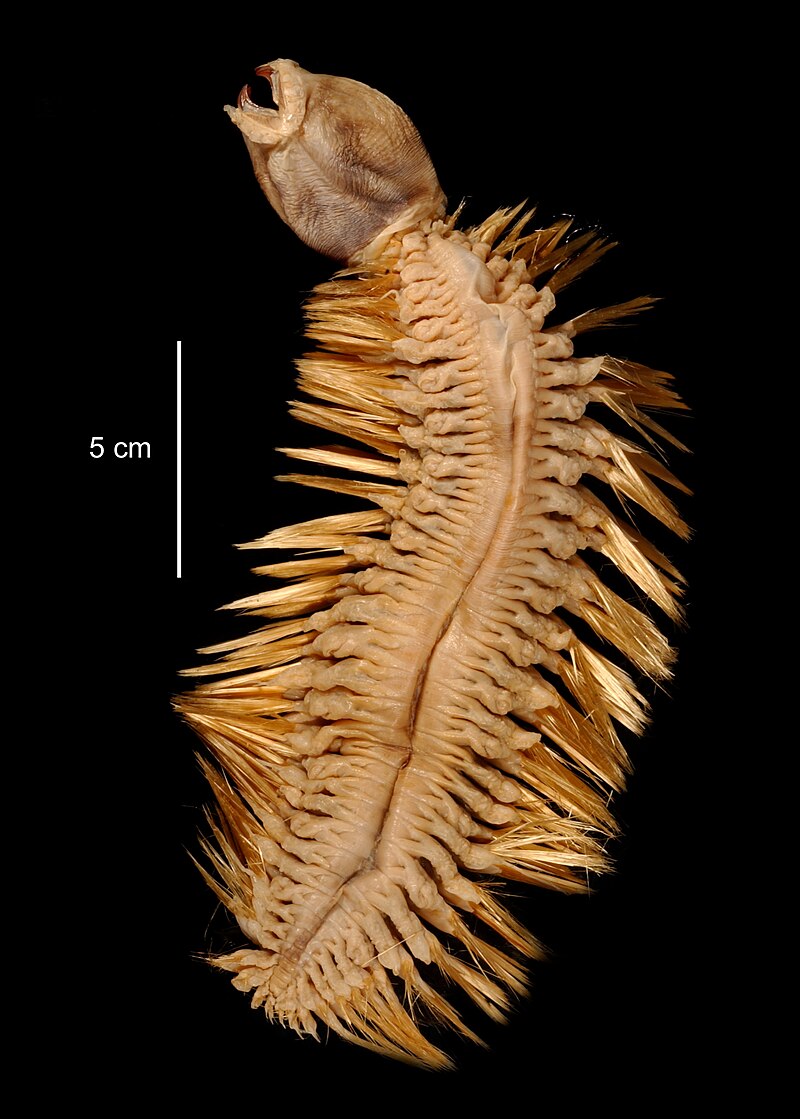The vast, icy waters of Antarctica hold secrets that often defy imagination, and a recent viral sensation has brought one of these secrets to the surface. A marine worm known to scientists as Eulagisca gigantea has captured the world’s attention, not for its gentle beauty, but for its startling, otherworldly appearance. This creature looks as though it has swum straight out of a fantasy novel, challenging our perceptions of what life in the deep sea can be.
Discovered by science in 1939, this worm has been dwelling in the Southern Ocean for decades, largely away from the public eye. It measures about eight inches long, roughly the size of a common banana, but the comparison ends there. Its body is covered in a coat of shimmering, golden bristles that give it an almost decorative, festive look. Yet, this golden exterior hides a much more formidable reality, one that is revealed when it decides to feed.

The most remarkable feature of the Eulagisca gigantea is its head, which is not a head in the conventional sense. It is actually a retractable throat, folded away inside its body until mealtime arrives. When it extends this apparatus, it unveils a circular mouth lined with an array of sharp teeth. This isn’t a passive bottom-feeder; it is a small-scale predator that uses this incredible adaptation to hunt and scavenge on the seafloor.
The worm’s beautiful bristles are believed to be functional, perhaps aiding in movement through the water or along the ocean bottom. They may also serve as a defense, deterring potential predators with their prickly texture. Despite its dramatic appearance, there is still much that remains a mystery about its daily life and habits, as encounters with this creature are rare and brief.
The recent online frenzy began when a photograph from a scientific archive found its way to social media. The image, showcasing the worm’s metallic sheen and fearsome extended jaws, captivated and unnerved viewers in equal measure. Its viral moment serves as a powerful reminder that our planet’s oceans are still full of wonders waiting to be discovered, each one expanding our understanding of the incredible diversity of life on Earth.


